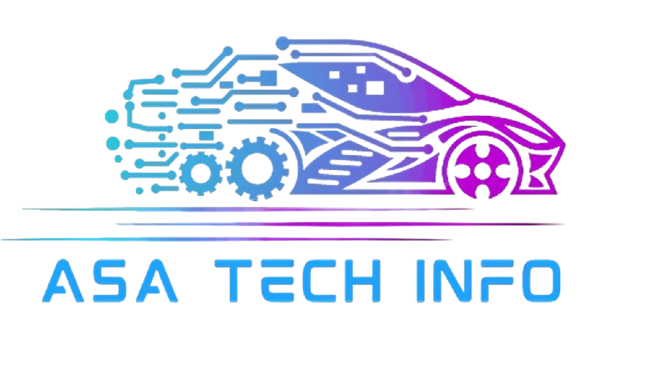The automotive industry is undergoing a period of rapid transformation, driven by technological advancements, environmental concerns, and evolving consumer preferences. As we approach 2025, the upcoming car models in 2025 are poised to be more electric, more connected, and more autonomous than ever before. This article explores the exciting developments on the horizon, highlighting key trends and models to watch.
1. An Overview of the Automotive Landscape in 2025
The automotive landscape in 2025 will be defined by a confluence of factors that are reshaping the industry.
1.1 Trends Shaping the Future
- Electrification and Hybrid Models: The shift towards electric vehicles (EVs) and hybrid powertrains is accelerating, driven by environmental concerns, government regulations, and falling battery costs. Many of the upcoming car models in 2025 will either be fully electric or offer hybrid options.
- Autonomous Driving Technologies: Self-driving technology is progressing rapidly, with advanced driver-assistance systems (ADAS) becoming increasingly sophisticated and widespread. While fully autonomous vehicles may still be a few years away, expect to see more advanced semi-autonomous features in the upcoming car models in 2025.
- Sustainability and Eco-Friendly Initiatives: Automakers are under increasing pressure to reduce their environmental footprint. This is reflected in the use of sustainable materials, more efficient manufacturing processes, and a focus on reducing emissions throughout the vehicle lifecycle.
1.2 Major Players in the Automotive Industry
- Established Manufacturers: Legacy automakers like Toyota, Ford, General Motors, Volkswagen, BMW, and Mercedes-Benz are investing heavily in electrification and autonomous driving, and will have many upcoming car models in 2025 that reflect this.
- Emerging Brands: Companies like Rivian, Lucid Motors, and others are challenging the established players with innovative EV designs and technologies.
- Tech Companies Entering the Market: Tech giants like Google (Waymo), Apple, and potentially others are also playing a growing role in the automotive industry, particularly in the development of self-driving technology, software, and in-car entertainment.
1.3 Key Regulatory Changes Impacting Car Models
- Emission Standards and Environmental Regulations: Governments around the world are implementing stricter emission standards, pushing automakers to accelerate the development of EVs and hybrids.
- Safety Protocols and Innovations: New safety regulations are driving the adoption of advanced driver-assistance systems (ADAS) and other safety technologies in the upcoming car models in 2025.
- Incentives for Electric Vehicle Adoption: Many countries offer tax credits, subsidies, and other incentives to encourage consumers to purchase EVs.
2. Noteworthy Electric Vehicle Releases
The electric vehicle market is expanding rapidly, and the upcoming car models in 2025 will include a wide array of exciting new EVs.
2.1 Established EV Manufacturers
- Tesla’s Latest Offerings: Tesla is expected to continue refining its existing models, potentially with improved battery technology, faster charging, and updated Autopilot features. The long-awaited Cybertruck is also anticipated to finally make its debut in the next couple of years, as well as a more affordable compact car.
- Nissan’s New Electric Lineup: Nissan, a pioneer in the EV market with the Leaf, is planning to expand its electric offerings with new models based on its Ariya platform.
- Volkswagen’s ID Series Expansion: Volkswagen is aggressively expanding its ID family of electric vehicles, which includes the ID.4, ID.5, and ID. Buzz. New models are planned, solidifying VW’s commitment to an electric future, and many will be included in the upcoming car models in 2025.
2.2 New Entrants in the EV Market
- Rivian: SUVs and Trucks: Rivian has already made waves with its R1T electric pickup truck and R1S SUV. Expect continued production and potentially new models aimed at different market segments, like a potential smaller SUV offering.
- Lucid Motors: Luxury Sedans: Lucid Motors, with its Air sedan, has established itself as a serious competitor in the luxury EV space. A planned expansion includes an SUV, Project Gravity.
- Other Notable Startups: Companies like Fisker, Canoo, and others are developing innovative EV designs and business models.
2.3 Innovations in Battery Technology
- Advances in Battery Life and Efficiency: Battery technology is constantly improving, with researchers and manufacturers striving for higher energy density, longer range, and lower costs. Solid-state batteries are a promising development that could revolutionize the EV industry. This may be seen in some upcoming car models in 2025.
- Fast Charging Solutions: Charging infrastructure is expanding rapidly, and charging times are decreasing. Expect to see more EVs capable of ultra-fast charging, minimizing downtime.
- Recycling and Sustainable Manufacturing Practices: The environmental impact of battery production is a growing concern. Automakers and battery manufacturers are investing in recycling programs and more sustainable manufacturing processes.
3. Anticipated Hybrid Vehicles
Hybrid vehicles will continue to play an important role in the transition to fully electric vehicles, and will be a major segment of the upcoming car models in 2025.
3.1 Mainstream Hybrid Offerings
- Toyota’s Innovative Models: Toyota, a leader in hybrid technology with the Prius, is expected to expand its hybrid lineup and introduce new models with improved fuel efficiency and performance.
- Ford’s Commitment to Hybrid Technology: Ford is incorporating hybrid powertrains across its lineup, including popular models like the F-150, Explorer, and Escape.
- Honda’s Latest Additions: Honda is also expanding its hybrid offerings, with models like the Accord Hybrid, CR-V Hybrid, and Insight.
3.2 Luxury Hybrid Cars
- Audi’s Hybrid Lineup: Audi is adding plug-in hybrid versions to its lineup, such as the Q5 TFSI e, A7 TFSI e and A8 TFSI e.
- BMW’s Advanced Hybrid Technology: BMW offers a range of plug-in hybrid models, including the 3 Series, 5 Series, X3, and X5, all with a focus on performance and efficiency.
- Mercedes-Benz’s Integration of Hybrid Powertrains: Mercedes-Benz is also incorporating hybrid technology across its lineup, including the C-Class, E-Class, and GLC.
3.3 Challenges and Opportunities for Hybrids
- Market Demand and Consumer Preferences: The popularity of hybrids may be affected by the increasing availability and affordability of fully electric vehicles.
- Technological Hurdles: Balancing performance, fuel efficiency, and cost remains a challenge for hybrid vehicle development.
- Cost and Accessibility: Hybrids are typically more expensive than comparable gasoline-powered vehicles, although the gap is narrowing.
4. The Rise of Autonomous Vehicles
Autonomous driving technology is rapidly advancing, and the upcoming car models in 2025 will feature increasingly sophisticated self-driving capabilities.
4.1 Major Developments in Self-Driving Technology
- Level 3 vs Level 4 Autonomy: Level 3 autonomy allows for conditional automation, where the vehicle can handle most driving tasks but the driver must be ready to intervene. Level 4 autonomy is considered high automation, where the vehicle can operate without human input under specific conditions. Expect to see more vehicles approaching or achieving Level 3 autonomy, but Level 4 remains further out for most consumer models.
- Key Companies Advancing Autonomous Features: Tesla, Waymo, Cruise, Argo AI, and Mobileye are among the leading companies developing self-driving technology.
- Safety Considerations for Autonomous Systems: Ensuring the safety and reliability of autonomous driving systems is paramount. Extensive testing, validation, and robust safety protocols are essential.
4.2 Potential Models Featuring Autonomous Capabilities
- Ford’s Self-Driving Initiatives: Ford is investing heavily in autonomous driving technology and has partnered with Argo AI to develop self-driving systems. It’s expected they will start incorporating more of this tech in upcoming car models in 2025.
- Waymo’s Partnerships with Manufacturers: Waymo, Alphabet’s self-driving car unit, is partnering with various automakers to integrate its technology into their vehicles.
- Other Future-Ready Vehicles: Many other automakers are developing their own autonomous driving systems or partnering with technology companies to bring these features to market.
4.3 Public Perception and Legislation Surrounding Autonomy
- Consumer Acceptance of Autonomous Features: Public acceptance of self-driving technology is gradually increasing, but concerns about safety and reliability remain.
- Legal Challenges for Self-Driving Cars: The legal framework for autonomous vehicles is still evolving, with questions about liability and regulation needing to be addressed.
- The Future of Public Transportation with Autonomous Vehicles: Self-driving technology has the potential to transform public transportation, with autonomous buses and shuttles becoming more common.
5. Vehicle Design Trends for 2025
The upcoming car models in 2025 will showcase new design trends, both inside and out.
5.1 Exterior Design Innovations
- Aerodynamics and Efficiency in Design: Expect to see more aerodynamic designs aimed at improving fuel efficiency and range, particularly for EVs.
- Customization and Personalization Options: Automakers are offering more customization options, allowing buyers to personalize their vehicles with unique colors, trims, and accessories.
- New Materials and Their Benefits: The use of lightweight materials like carbon fiber and advanced composites will increase, contributing to improved performance and efficiency.
5.2 Interior Features and Comfort
- Smart Infotainment Systems: Expect larger, more sophisticated infotainment systems with advanced connectivity features, voice control, and integration with smartphones and other devices. These systems will become even more prominent in the upcoming car models in 2025.
- Eco-Friendly Materials in Car Interiors: Automakers are increasingly using sustainable and recycled materials in car interiors, such as vegan leather, recycled fabrics, and plant-based materials.
- Advanced Ergonomics for Comfort: Expect to see more comfortable and supportive seats, improved climate control systems, and other features designed to enhance the driving experience.
5.3 Safety Features and Innovations
- Enhanced Driver Assistance Systems: Advanced driver-assistance systems (ADAS) will become even more sophisticated, with features like adaptive cruise control, lane keeping assist, automatic emergency braking, and blind spot monitoring becoming standard on many models.
- New Technologies for Passenger Safety: Expect to see innovations in airbag technology, improved crumple zones, and other features designed to protect occupants in the event of a collision.
- Vehicle-to-Everything (V2X) Communication: V2X technology, which allows vehicles to communicate with each other and with infrastructure, is expected to become more prevalent, enhancing safety and enabling new applications.
Conclusion
The upcoming car models in 2025 represent a significant step forward in the evolution of the automobile. The industry is embracing electrification, autonomous driving, and sustainability, leading to vehicles that are more efficient, safer, and environmentally friendly. Consumer choices will play a crucial role in shaping the future of the automotive industry, as will ongoing advancements in technology and evolving government regulations.
- A Reflection on the Future of the Automotive Industry: The automotive industry is undergoing a period of unprecedented change, with new technologies and business models emerging at a rapid pace.
- The Importance of Consumer Choice and Environmental Responsibility: Consumers have the power to influence the direction of the industry by choosing vehicles that align with their values and priorities.
- Encouragement to Stay Informed on Upcoming Models: The automotive landscape is constantly evolving. Staying informed about the latest developments will help consumers make informed decisions when purchasing their next vehicle.
FAQs
What are the most anticipated car models for 2025?
Anticipation is high for models like the Tesla Cybertruck and a potential affordable compact EV, along with new electric offerings from established manufacturers like Volkswagen, Ford, and GM. The continued development of popular EVs and hybrids, along with luxury models from brands like Lucid and Rivian, is also highly anticipated.
How are manufacturers addressing environmental concerns?
Manufacturers are focusing on electrification, using sustainable materials, improving manufacturing processes, and developing more fuel-efficient vehicles.
Will electric vehicles become more affordable by 2025?
Yes, EV prices are expected to continue to decline as battery technology improves and production scales up. Government incentives will also play a role in making EVs more accessible.
What role will technology play in future vehicle designs?
Technology will be central to future vehicle designs, with advancements in areas like autonomous driving, connectivity, infotainment systems, and safety features.
How can consumers prepare for the shift toward electric and autonomous vehicles?
Consumers can research available models, learn about charging infrastructure, and stay informed about the latest developments in EV and autonomous driving technology. They can also consider their own driving needs and preferences to determine which type of vehicle best suits their lifestyle. Keeping an eye on the upcoming car models in 2025 will help them make an informed decision.


















